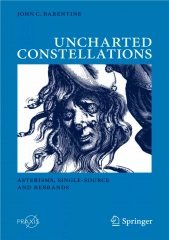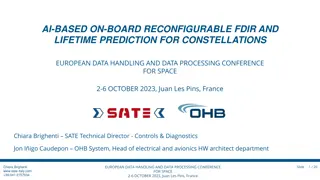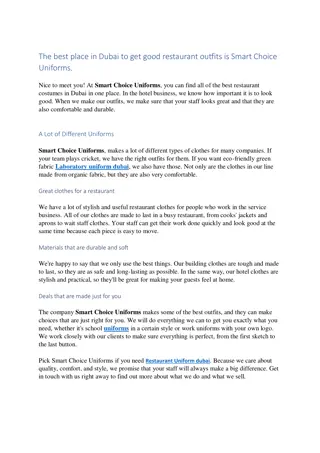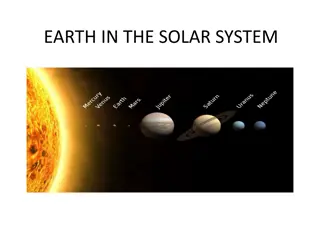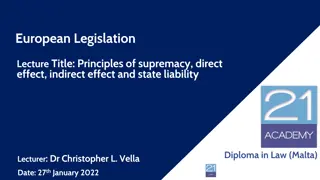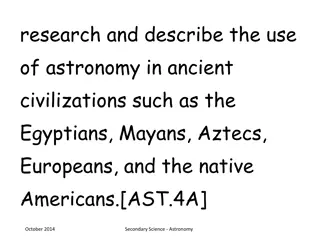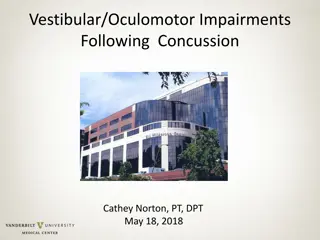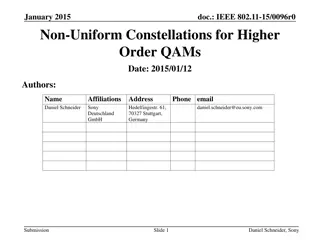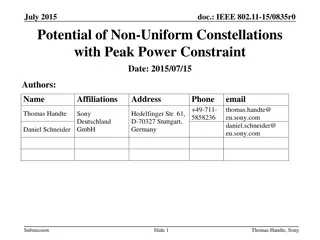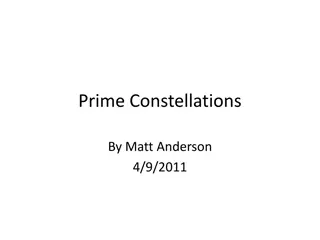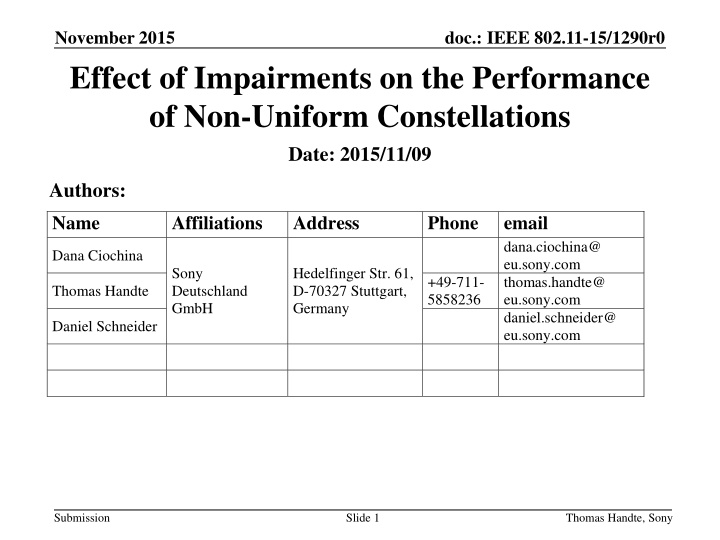
Performance of Non-Uniform Constellations in SC Modulation with Impairments
Explore the impact of impairments on non-uniform constellations (NUCs) in single-carrier (SC) modulation. The study delves into NUCs with 64 signal points under various impairments like ADC quantization and fading channels, revealing robustness and potential gains. Discover how NUCs compare to uniform constellations, offering shaping gain and improved robustness in SC transmission. Dive into optimization strategies for NUCs in SC systems, highlighting benefits such as reduced SNR requirements and lower peak-to-average power ratio.
Download Presentation

Please find below an Image/Link to download the presentation.
The content on the website is provided AS IS for your information and personal use only. It may not be sold, licensed, or shared on other websites without obtaining consent from the author. If you encounter any issues during the download, it is possible that the publisher has removed the file from their server.
You are allowed to download the files provided on this website for personal or commercial use, subject to the condition that they are used lawfully. All files are the property of their respective owners.
The content on the website is provided AS IS for your information and personal use only. It may not be sold, licensed, or shared on other websites without obtaining consent from the author.
E N D
Presentation Transcript
November 2015 Effect of Impairments on the Performance of Non-Uniform Constellations Date: 2015/11/09 doc.: IEEE 802.11-15/1290r0 Authors: Name Affiliations Address Phone email dana.ciochina@ eu.sony.com thomas.handte@ eu.sony.com daniel.schneider@ eu.sony.com Dana Ciochina Sony Deutschland GmbH Hedelfinger Str. 61, D-70327 Stuttgart, Germany +49-711- 5858236 Thomas Handte Daniel Schneider Submission Slide 1 Thomas Handte, Sony
November 2015 doc.: IEEE 802.11-15/1290r0 Abstract This contribution outlines the performance of non- uniform constellations (NUCs) in single-carrier (SC) modulation under influence of impairments NUCs of [1] with 64 signal points are considered Considered impairments ADC quantization Fading channel NUCs are shown to be robust against quantization maintain their gain or even have an additional gain in fading channels Submission Slide 2 Thomas Handte, Sony
November 2015 doc.: IEEE 802.11-15/1290r0 Motivation Higher order QAMs discussed in e.g. [2]-[5] as potential technology for 802.11ay OFDM: 128-QAM, 256-QAM (up to 64-QAM in ad) SC: 64-QAM (up to 16-QAM in ad) Non-uniform constellations performance compared to uniform constellations (UCs) NUCs provide Shaping gain up to 0.7dB for 256-QAM (OFDM) [4] Improved robustness against phase noise [5] Peak power gain, e.g. [1,6] A moderate increase in demapper complexity [4-6] 2D NUCs feature quadrant symmetry (NUCs) provide increased Submission Slide 3 Thomas Handte, Sony
November 2015 doc.: IEEE 802.11-15/1290r0 Introduction So far, the effect of impairments on the performance of NUCs has been investigated for OFDM only Investigations [7] show that NUCs can maintain or even improve their gain in presence of phase noise, quantization, or fading channel. In this contribution, we investigate the performance of NUCs in SC transmission NUCs for SC can be optimized in various ways [1] Here we present performance results of NUCs with Zero shaping gain but minimum PAPR: Cat. B Maximum shaping gain and unconstraint PAPR: Cat. D NUCs with other optimization targets (see [1]) are similarly influenced Submission Slide 4 Thomas Handte, Sony
November 2015 doc.: IEEE 802.11-15/1290r0 Introduction (cont.) Wrap-up of [1] The overall gain of SC NUCs has two sources Shaping gain NUCs require less SNR than UCs for same FER Peak power gain NUCs can have a lower peak to average power ratio (PAPR) than UCs Shaping gain and peak power gain are not independent Four different optimization have been considered NUC Cat. Shaping gain PAPR A max{shp_gain + pkPwr_gain} B min 0 Focus in this presentation C max 2.77dB D max unconstraint Submission Slide 5 Thomas Handte, Sony
November 2015 doc.: IEEE 802.11-15/1290r0 Simulations Parameters Focus on constellations with 64 signal points .11ad LDPC with code rates (CR): 1/2, 5/8, 3/4, 13/16 SC modulation Message length: 1000 bytes Channel model AWGN .11ad fading channels, time-varying MMSE frequency-domain equalizer Analysis Performance compared at FER = 10-2 Benchmark Regular uniform 64-QAM Submission Slide 6 Thomas Handte, Sony
November 2015 doc.: IEEE 802.11-15/1290r0 Results: Quantization Quantization of ADC considered ADC has a total of M bits (incl. sign) Each component (I and Q) is quantized with M bits 15% noise margin of ADC range i.e. ADC saturation is 15% greater than maximum amplitude in noise free case sgn b1 b2 bM-1 M bits Submission Slide 7 Thomas Handte, Sony
November 2015 doc.: IEEE 802.11-15/1290r0 Results: Quantization (shaping gain) Shaping gain is maintained for (reasonable) quantization NUCs of Cat. B stay close to their target shaping gain of 0dB NUCs of Cat. D achieve always a better performance than UCs Submission Slide 8 Thomas Handte, Sony
November 2015 doc.: IEEE 802.11-15/1290r0 Results: Quantization (overall gain) Overall gain is maintained for (reasonable) quantization Slight performance degradation for M = 5 bit Submission Slide 9 Thomas Handte, Sony
November 2015 doc.: IEEE 802.11-15/1290r0 Results: Fading channel Various .11ad channel models considered AWGN, cubical (cub), conference room (conf), living room (liv) Cubical: LOS Conference, living room: NLOS Submission Slide 10 Thomas Handte, Sony
November 2015 doc.: IEEE 802.11-15/1290r0 Results: Fading Channel (shaping gain) Shaping gain is maintained in fading channels NUCs of Cat. B: Shaping gain is independent on actual channel NUCs of Cat. D: An additional gain can be achieved in NLOS Submission Slide 11 Thomas Handte, Sony
November 2015 doc.: IEEE 802.11-15/1290r0 Results: Fading Channel (overall gain) Overall gain is maintained in fading channels Submission Slide 12 Thomas Handte, Sony
November 2015 doc.: IEEE 802.11-15/1290r0 Conclusion Investigation of NUC performance in Presence of ADC quantization NUC gain is maintained for reasonable quantization Fading channels NUC gain is at least maintained NUCs of Cat. D can achieve an additional gain in NLOS channels NUCs are a promising technology for .11ay Significant performance gains (up to 1.6dB) Robust against quantization Robust in fading channels Only a moderate complexity increase Further aspects under consideration E.g. phase noise influence, power amplifier model Submission Slide 13 Thomas Handte, Sony
November 2015 doc.: IEEE 802.11-15/1290r0 References 1. 11-15-0835-01-00ay Potential of Non-Uniform Constellations with Peak Power Constraint 2. 11-14-1378-00-ng60 PHY rate for NG60 3. 11-14-0652-01-0wng-wng Next Generation 802.11ad 4. 11-15-0096-01-ng60 Non-uniform Constellations for higher Order QAMs 5. 11-15-0601-00-00ay Non-uniform Constellations for 64QAM 6. 11-15-0339-00-ng60 SC-64APSK for 11ay 7. 11-15-1289-00-00ax Non-Uniform Constellations for 1024- QAM Submission Slide 14 Thomas Handte, Sony

